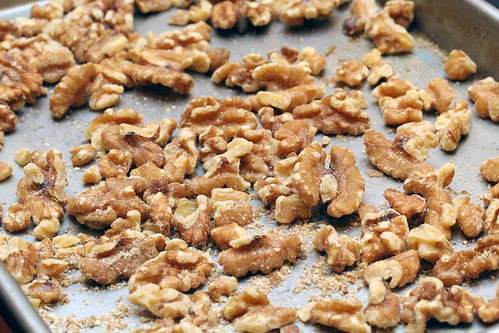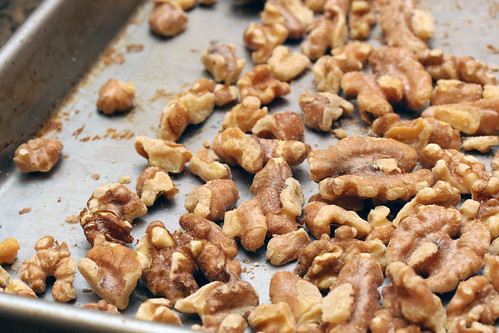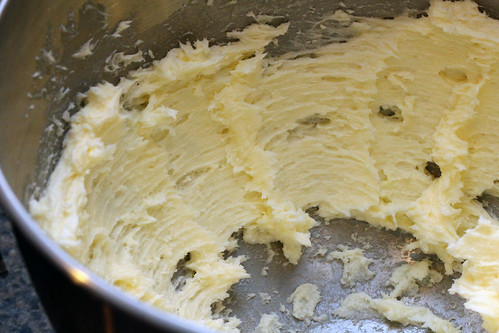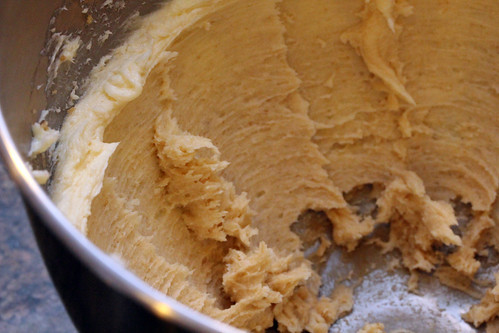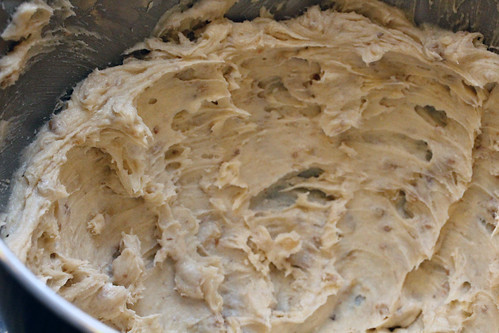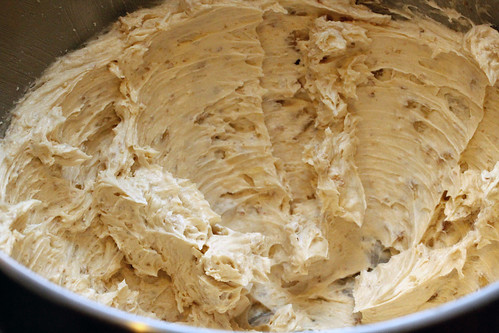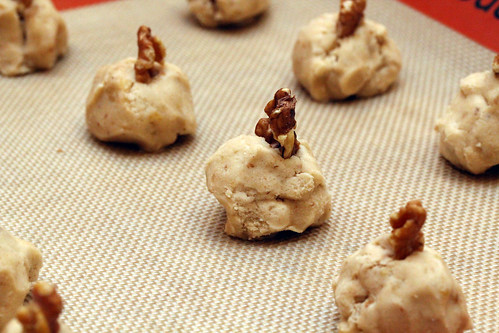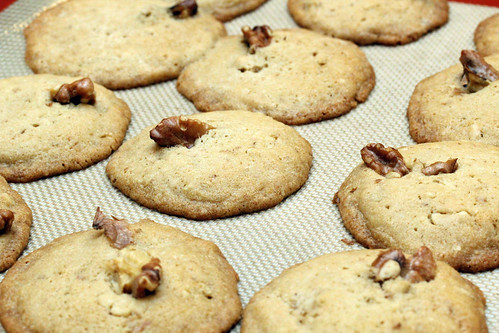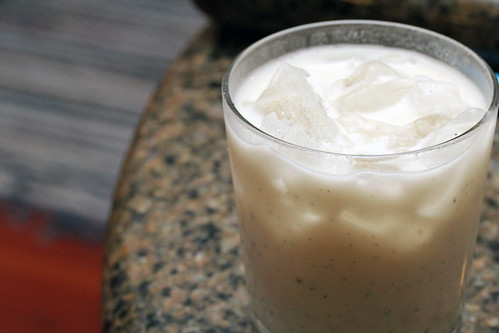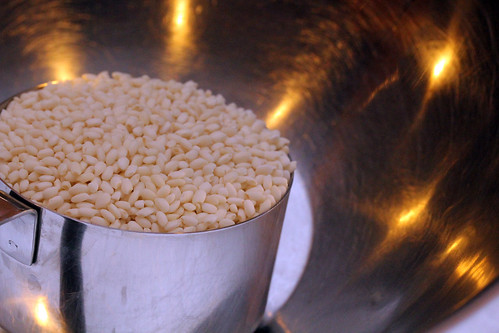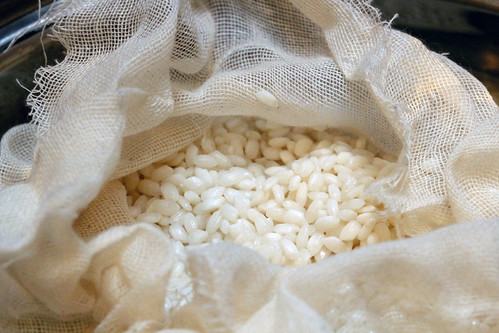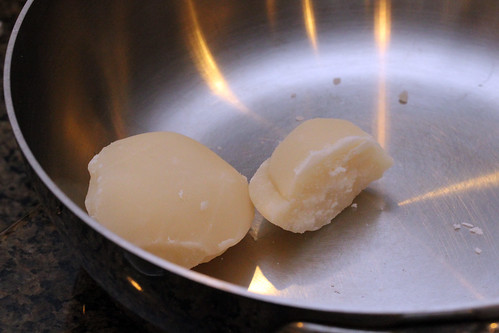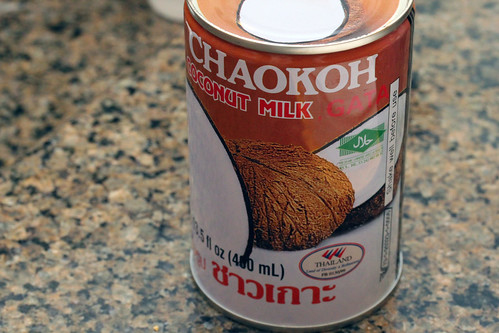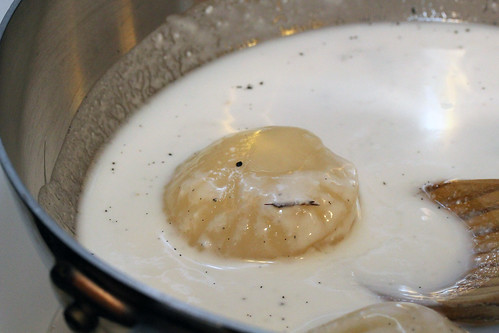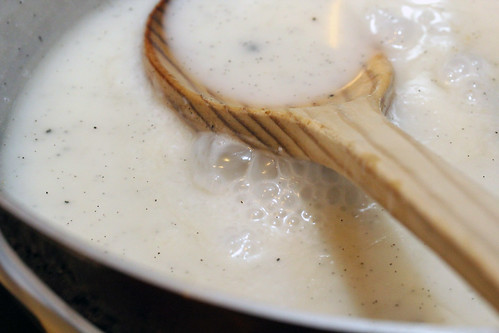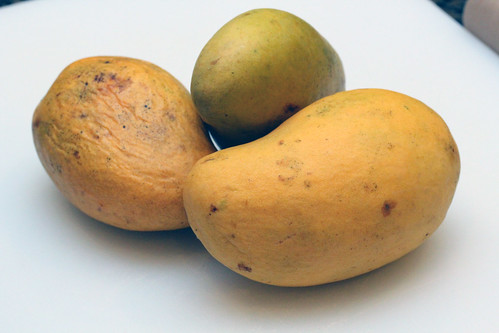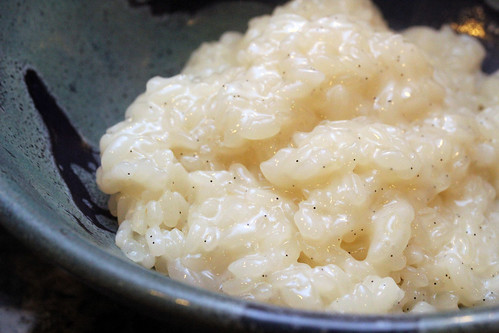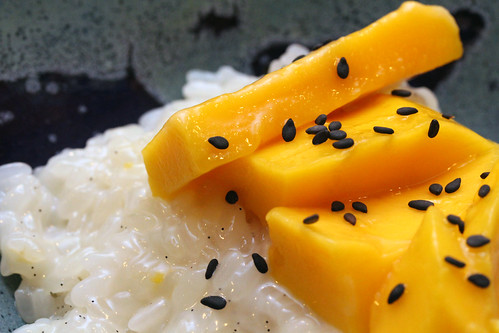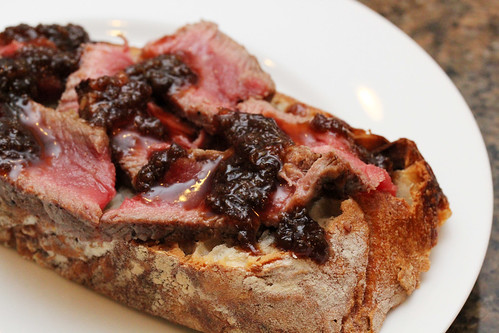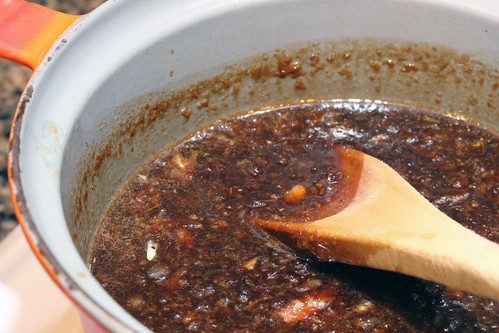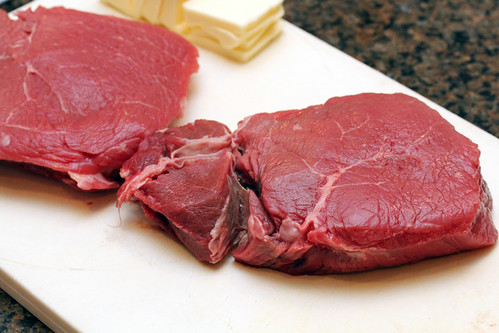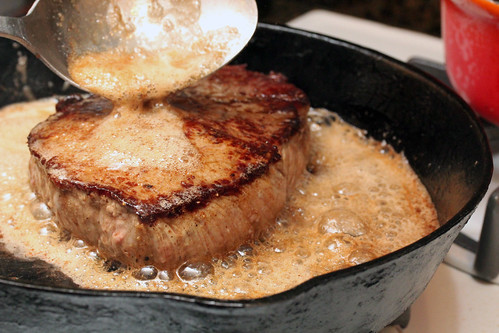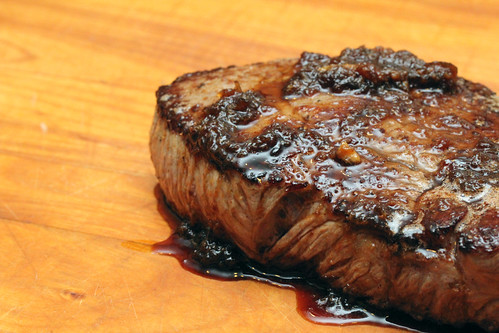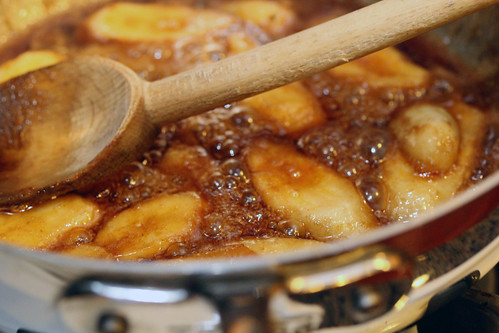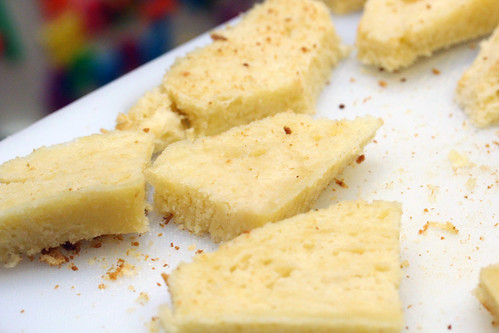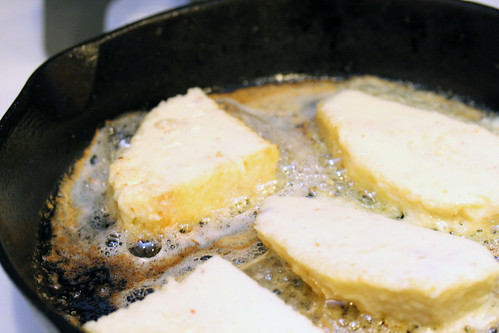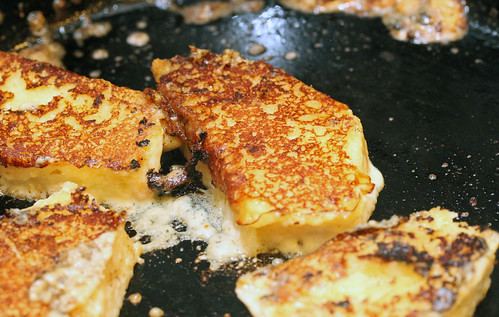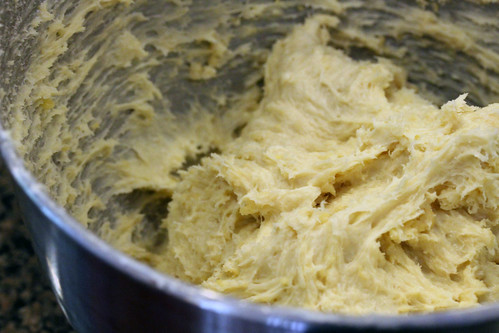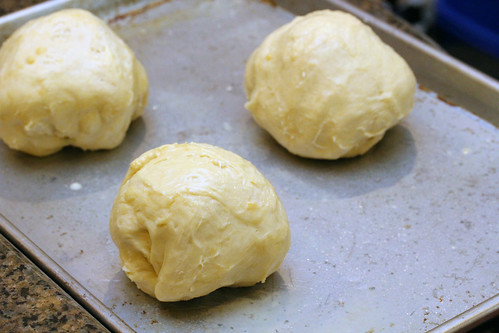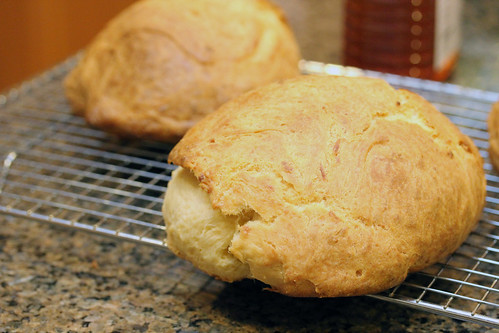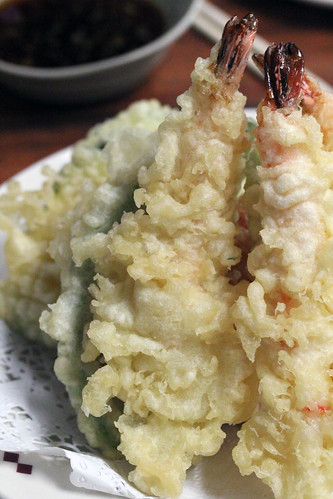We first discovered mochi nearly ten years ago at Nobu in New York. It was delicately wrapped around little balls of ice cream. The chewy texture of the sweet rice mochi wrapped around a perfect globe of ice cream was sensational.
I purchased my microwave to be able to make mochi at home (several years ago). I present to you, my first success (in a long, long string of failures) to bring mochi-making into the Dude home. Modified from The Sweet Spot:
2 tsp oil
1 cup mochi flour
¾ cup sugar
1 tbsp yuzu juice
2⁄3 cup water
3 tbsp potato starch
1 tbsp confectioners' sugar
1⁄8 tsp salt
lemon zest
Mochi flour (also called sweet rice flour and Mochiko) is available in most Asian markets. I've only ever seen this brand of Mochiko, available on both the east and west coasts.

I have only ever seen yuzu juice in Japanese grocery stores. It has a citrus flavour to it, but has a novel bite to it that distinguishes it from lemon. It's stronger than lemon, so substitute even slightly more lemon juice if you can't get yuzu.
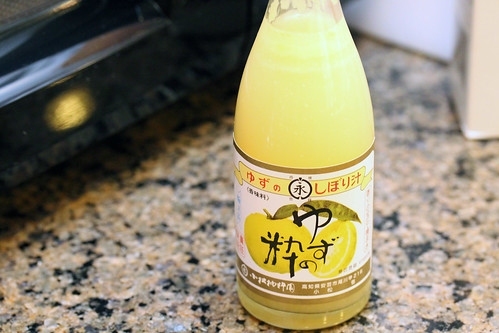
Oil a small baking pan. Mix the mochi flour, sugar, yuzu juice and water in a microwave-safe bowl, until it forms a wet mess.
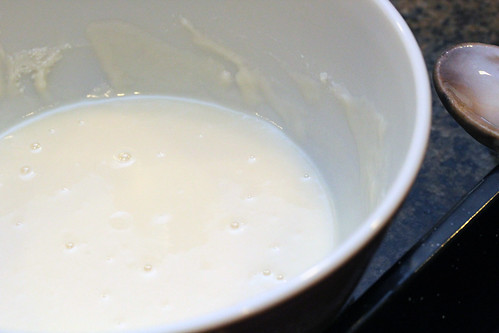
Cook for 3 minutes in your microwave on high.
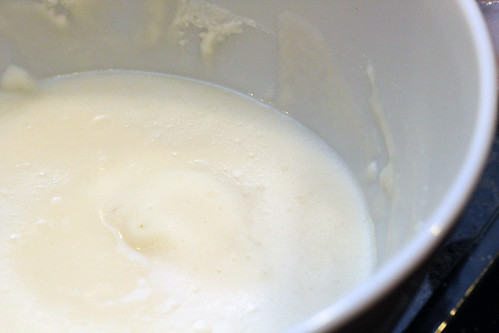
Stir. Cook for 2 more minutes in your microwave on high.
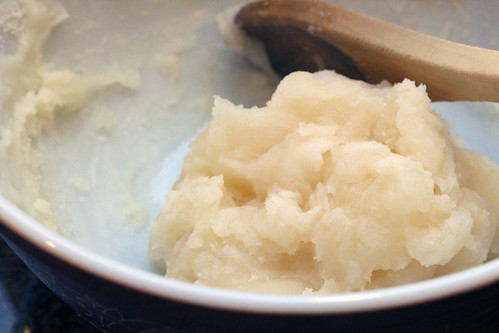
Stir. The mochi is done when it starts to dry out (but before it becomes bubbly and hard). Your mileage may vary (the book suggested ten minutes, I was done in five).
Sprinkle with potato starch, and roll out with a rolling pin to form a layer ¾" thick. Use the potato starch to keep everything from sticking. Place in your oiled pan, let cool.
When ready to serve, sprinkle potato starch on your knife before slicing into the mochi. Sprinkle the mochi slices with the salt, confectioner's sugar and lemon zest. Serve.
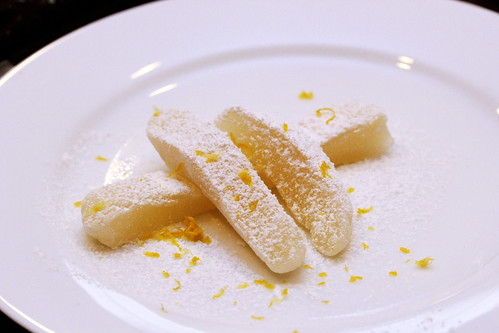
This dessert is not super sweet. The mild-flavoured mochi makes a nice wind down as a second dessert after something bolder. Delicious.
By Bbq Dude

